The Heat is ON! The mercury is rising up over 100 this month in Texas, and it is time to transition to summer running. Some people HATE running in the heat and stick to indoor treadmills, but I am not one of them. I embrace running in Texas in all seasons. But you must approach the heat with respect.
First The Disclaimer: Although I am an experienced runner, I am not a medical professional. All content and information in this blog is for informational and educational purposes only, and does not constitute medical advice. You should consult a medical professional or healthcare provider if you are seeking medical advice, diagnoses, or treatment. If you are just starting out running, or getting back in shape, going out in the heat is not a good idea. Exercise will put stress on your body that you are not used to, and the heat will multiply that stress. If this is you, have a chat with your Doctor.
Let me be clear: the running in the heat has kicked my ass. Multiple times. But I have learned from my experience and hope that my hard-earned sweat equity can help you.
Some Basics
As the temperature rises, you are going to need to slow down and take it a lot easier for a few weeks. It will take your body about 2 weeks to make the physiological changes needed to operate well in the heat.
The simple view is that your body needs to learn to sweat. In fact, there are a lot of changes that your body will go through as you adapt to the heat. Sweating is part of it, but there are also adaptions around thermo-regulation, plasma volume, electrolyte regulation, skin blood flow, and muscle glycogen regulation. If you want more on the hard science, here is a good article from the sports science division at Gatorade. As these experts state:
“Usually, about 7-14 days of heat exposure are needed to induce heat acclimatization.”
(Gatorade Sports Science Institute, January 2016)
There may be some good news for you: the fitter you are, the easier it is to take the heat. If you are in great shape, your body has already undergone some of the same adaptions needed to deal with the heat.
If you are like me, a middle of the pack runner, you are going to need to be cautious with the heat. Here are my tips for running in Texas as the temperature goes to 90, 100, and beyond.
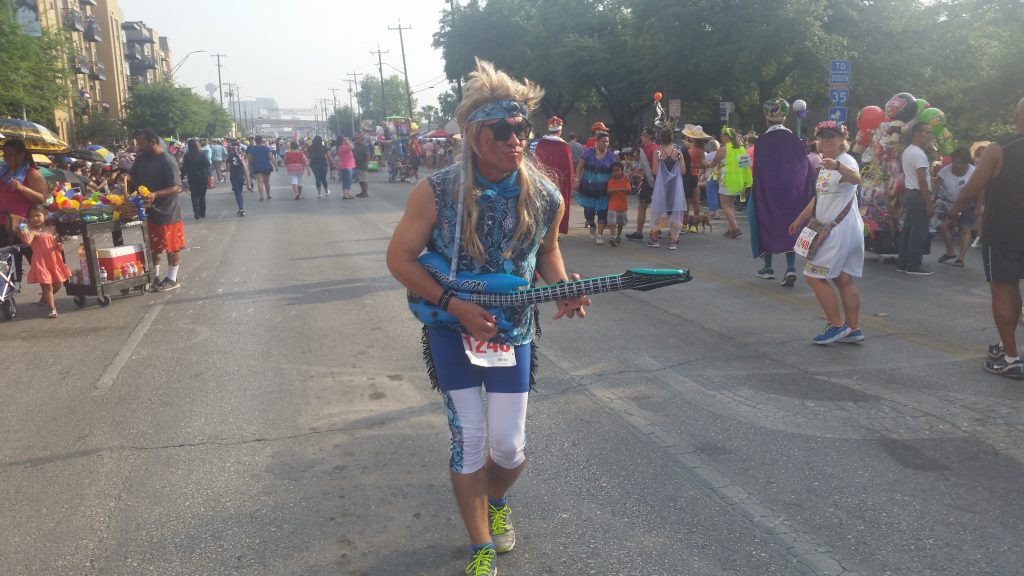
Running in the Heat
- Take more than enough water with you. You should have water left over when you finish your run. If you are going long, you will definitely need some electrolytes. (see The Mistake that can Kill below)
- Wear a running shirt and running cap that is light colored and wicks sweat away. These have two benefits: they keep the sun from cooking you, and the wicking action of the material combined with the air flow will help lower your overall temperature a bit.
- Sunscreen. I prefer SPF 100 on my neck and face, and something lighter, like SPF 50 on my arms and legs. Sunscreen does not help with thermo-regulation, but it does not hurt either.
- Pre cool yourself. This isn’t always feasible but is something I have done before a race in the heat. For about a half hour before the run start, sit in your car with your A/C on high and pointed at your trunk and face. This will lower your core temperature a bit and gain you a few minutes in the run.
- Have a cool down area. If you are pushing yourself on the run, ensure that you have someplace cool available, such as your car or your house, after your run. When you stop running, if you are still out in the heat, your core temperature will not go down by itself.
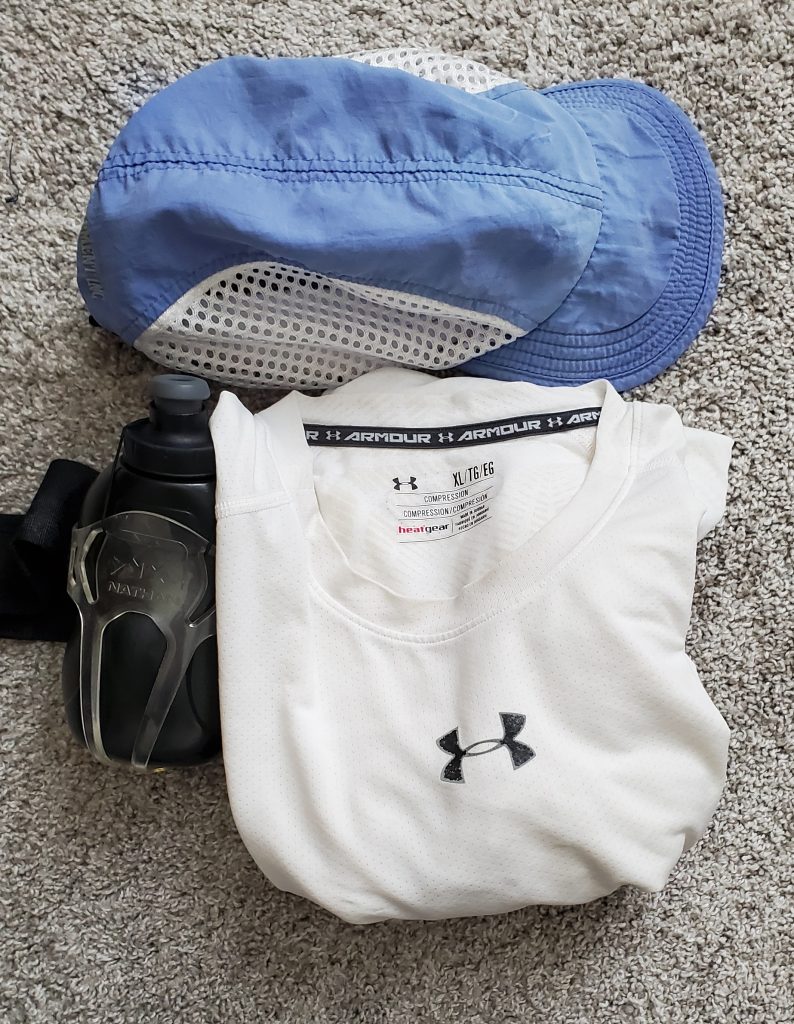
On Your Run
If you have done your prep (above), you are setting yourself up for success. Now for the run:
- Slow it down for the next few weeks. Don’t go as far or as fast as you do when it is cool. Again, you need a few weeks to adjust to the heat. If you are a heart rate zone follower, keep it down to Zone 2, light intensity. Don’t worry about your time or pace: your body’s adaption to the heat will give you a win there, you just have to wait for it.
- Be aware of your body. If you feel light headed or you stop sweating, you are in the danger zone and you need to stop. In my first week of heat adaption training, I had been out for about an hour and then did a steep hill ascent. When I stopped at the top of the hill, my blood stopped feeding my muscles and returned to my core. That change was multiplied by the heat, and I got light headed. I just stopped, got in the shade, had some electrolytes, and was OK after a few minutes.
The Mistake that can Kill
Everyone has heard of Heat Stroke which can happen when your body core temperature gets too high. If you wear a good wicking running shirt, running cap, drink enough water, and take it slow, you will not be in danger of heat stroke.
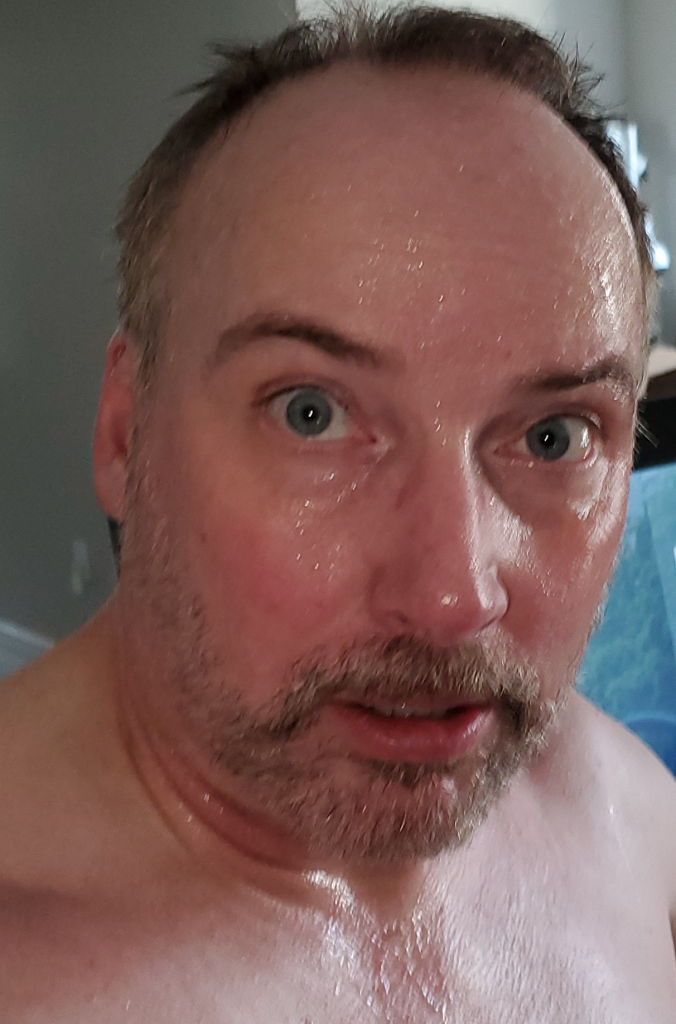
But, even if you take all these precautions, there is another condition that can land you in the hospital.
I have personally experienced this condition. I am talking about Hyponatremia. If you are like me, you have never heard of this. It is dangerous and not pretty. Here is what happened to me:
|
I headed out to the Leon Creek trail for a 2 ½ hour run. It was a hot day, hovering just over 100, so I took a bottle of Gatorade and a bottle of water with me. Heading out, I could feel the heat building up. I made sure to take a few sips from my bottles every 20 minutes. I drank the Gatorade down in about half an hour then started in on the water. After an hour, I was still feeling pretty good. Not fresh for sure, but not too bad. I was actually a bit full from the water I was drinking. Every 4 miles or so I diverted to a trailhead to refill one of my water bottles. The water was very warm, almost hot, but at least I wouldn’t go thirsty. After an hour and 15, I turned back on the trail. The heat of the day was hitting, and there was hardly anyone else left on the trail. Just under the two-hour mark, I started to get a bit nauseated. My stomach felt like water was just sloshing around. My hands felt like they were swelling a bit; it was kind of hard to make a fist. I poured some water down the back of my shirt to try to cool off a bit. It did not help. I was really, really hot. It was getting harder to make progress, I felt like I was running through deep sand. Every step was getting harder. My breathing was getting shallow and fast. I slowed to a walk. I noticed that my arms had become dry, I wasn’t sweating anymore. Pinpricks of bright light flew in front of me eyes. This was not looking good. I took off my running cap to try and cool down. The sun was hitting by head, but it did not feel that hot. How could that be? I sluggishly thought to myself that I might be close to dying. No one else was on the trail. My legs were not following my directions. I had to focus and almost will them to move. It was painful. It felt like they were disconnected from me and encased in lead. I decided that the only thing to do was to get back to the car. Get back to the air conditioning. I dazedly saw a bench through the haze and stumbled over to it. I sat down. Just a few minutes, I though. Maybe I’ll start to feel better. I felt my vision tunneling a bit. I must have blacked out for a few seconds, because I suddenly opened my eyes again. The sitting was not helping. I had to get back to the car. I got up slowly kept plodded through the heat. My legs were barely working. I must have looked drunk. The quarter mile markers rewound as I passed them. I could not believe how slow I was going. My vision had reduced to a small tunnel in front of me. I felt extremely hot, and had stopped sweating. My arms had goosebumps. I stumbled forward until I reached my car. Where were my keys, I thought? Focus! OK, they are in my pocket. I could do this. I unlocked and got into the car, and started it. I kicked the A/C onto high, blasting it straight into my face. I felt bloated, woozy, and wanted to vomit. The A/C started to slowly work its magic. My vision came back. My hands were still swollen, but at least I could move my fingers. I drank some sports drink that I had left in the car. It seemed to help. |
Hyponatremia
So, what happened? I had plenty of water, yet still ran into a serious issue.
The issue was with my electrolyte balance. I had diluted my electrolytes by having too much water. The Gatorade I had early on was gone, and my electrolyte balance was off. You need electrolytes in your blood stream so your muscles (and brain) work correctly.
When you know the signs (see the progression of symptoms in my story), Hyponatremia can be easily prevented. If I would have taken some electrolyte replacement powder with me, I would have been fine.
If you’d like to read more about Hyponatremia, WebMD has a good article on hyponatremia.
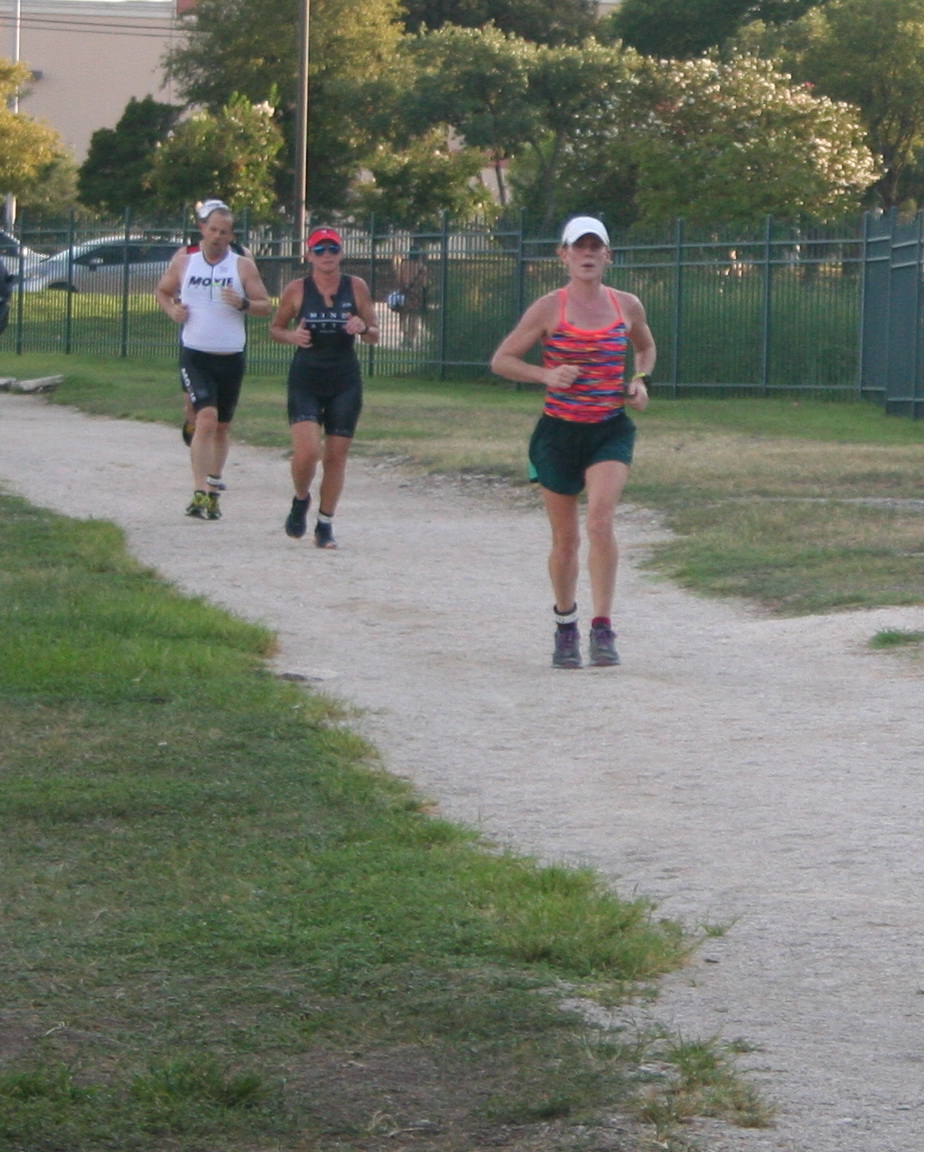

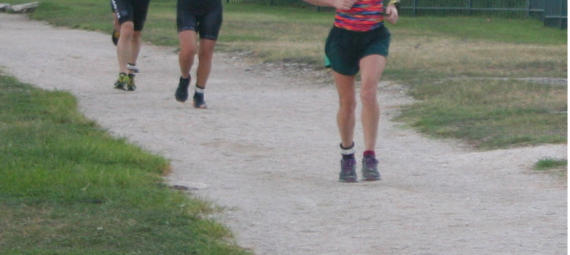
I am happy you made it out okay! Sounds scary!
Enjoy reading your stories!
This is the second time I’ve read your article. Texas is very hot and I have continued to carry electrolytes to add to my water on my runs. Thank you for warning everyone of the dangers of heat.